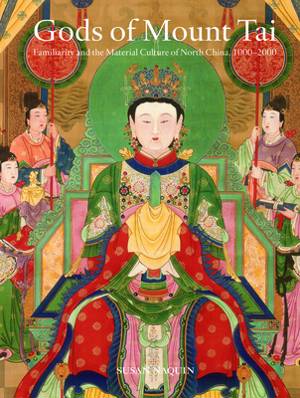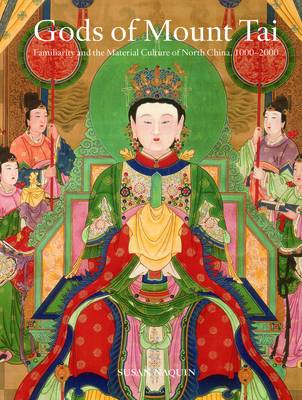
- Afhalen na 1 uur in een winkel met voorraad
- Gratis thuislevering in België vanaf € 30
- Ruim aanbod met 7 miljoen producten
- Afhalen na 1 uur in een winkel met voorraad
- Gratis thuislevering in België vanaf € 30
- Ruim aanbod met 7 miljoen producten
Zoeken
Gods of Mount Tai
Familiarity and the Material Culture of North China, 1000-2000
Susan Naquin
Hardcover | Engels
€ 465,95
+ 931 punten
Omschrijving
At the intersection of art and religious history, this work suggests a fresh method for studying Chinese gods and sacred places. Susan Naquin tells the full story of the transformations of the Lady of Mount Tai, North China's most important female deity, and her mountain home. This generously illustrated visual history presents a rich array of overlooked statues, prints, murals, and paintings of gods that were discovered in museums, auctions, and extensive travel. By focusing on ordinary images, temples, and region-based materiality Naquin demonstrates how this flexibly gendered new god flourished while her male predecessor was neglected. Both suffered greatly during the last century, but Mount Tai continues to be a culturally significant monument and China's most popular tourist mountain.
Winner of the 2024 Levenson Prize (Pre-1900) awarded by the Association for Asian Studies.
https: //www.asianstudies.org/aas-2024-prizes/
Winner of the 2024 Levenson Prize (Pre-1900) awarded by the Association for Asian Studies.
https: //www.asianstudies.org/aas-2024-prizes/
Specificaties
Betrokkenen
- Auteur(s):
- Uitgeverij:
Inhoud
- Aantal bladzijden:
- 576
- Taal:
- Engels
Eigenschappen
- Productcode (EAN):
- 9789004504257
- Verschijningsdatum:
- 13/04/2022
- Uitvoering:
- Hardcover
- Formaat:
- Genaaid
- Afmetingen:
- 198 mm x 254 mm
- Gewicht:
- 1419 g

Alleen bij Standaard Boekhandel
+ 931 punten op je klantenkaart van Standaard Boekhandel
Beoordelingen
We publiceren alleen reviews die voldoen aan de voorwaarden voor reviews. Bekijk onze voorwaarden voor reviews.








